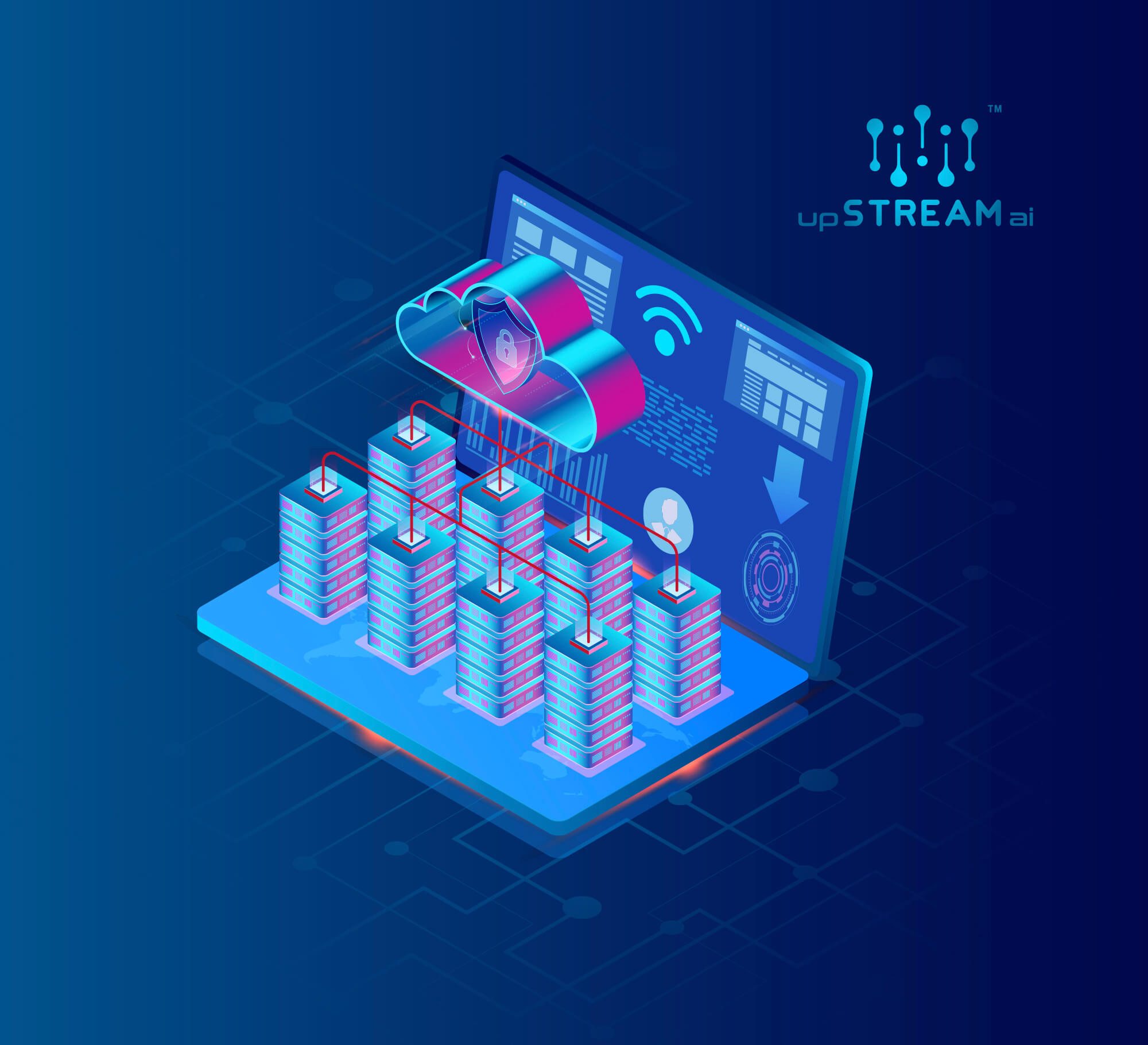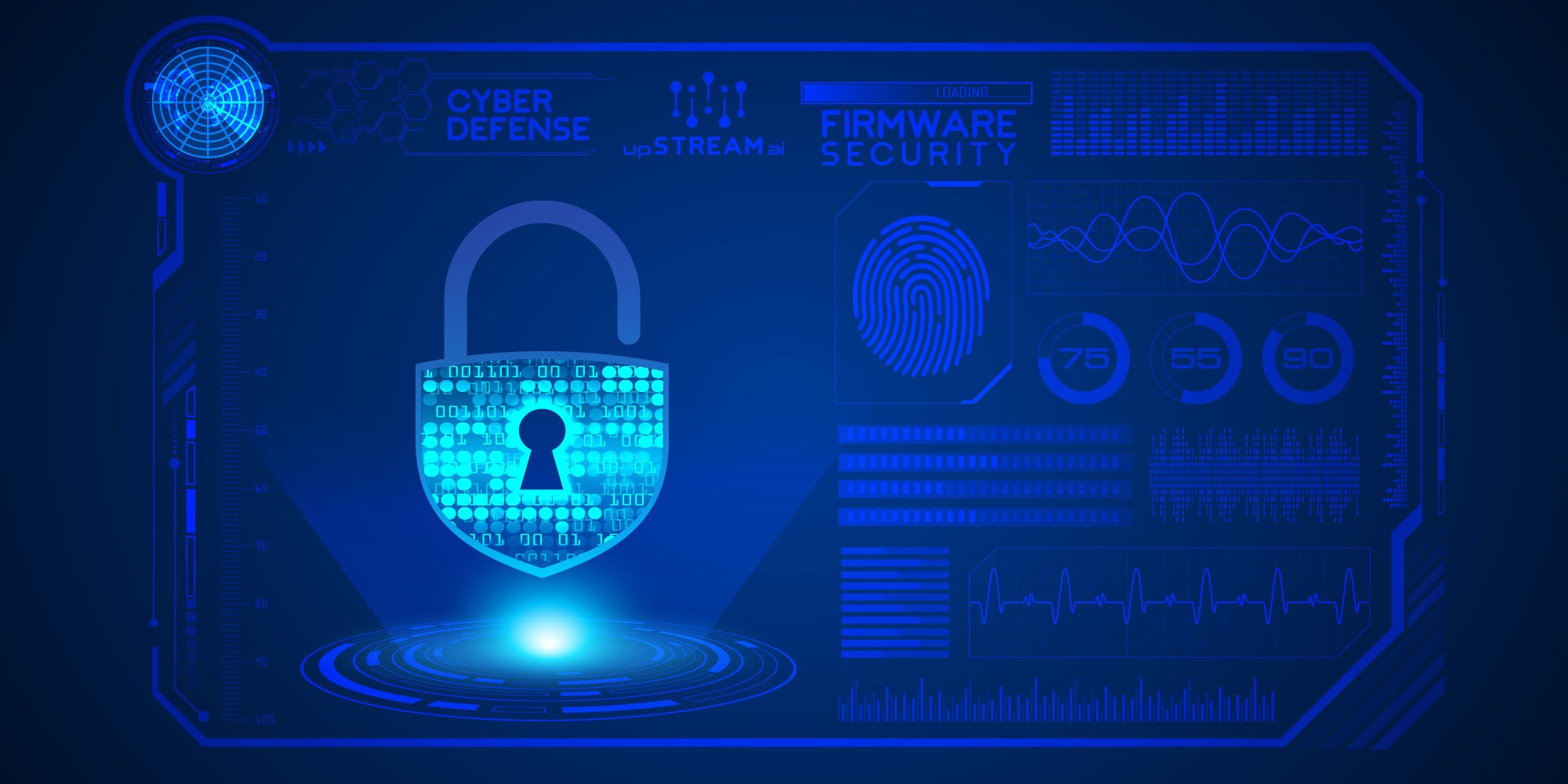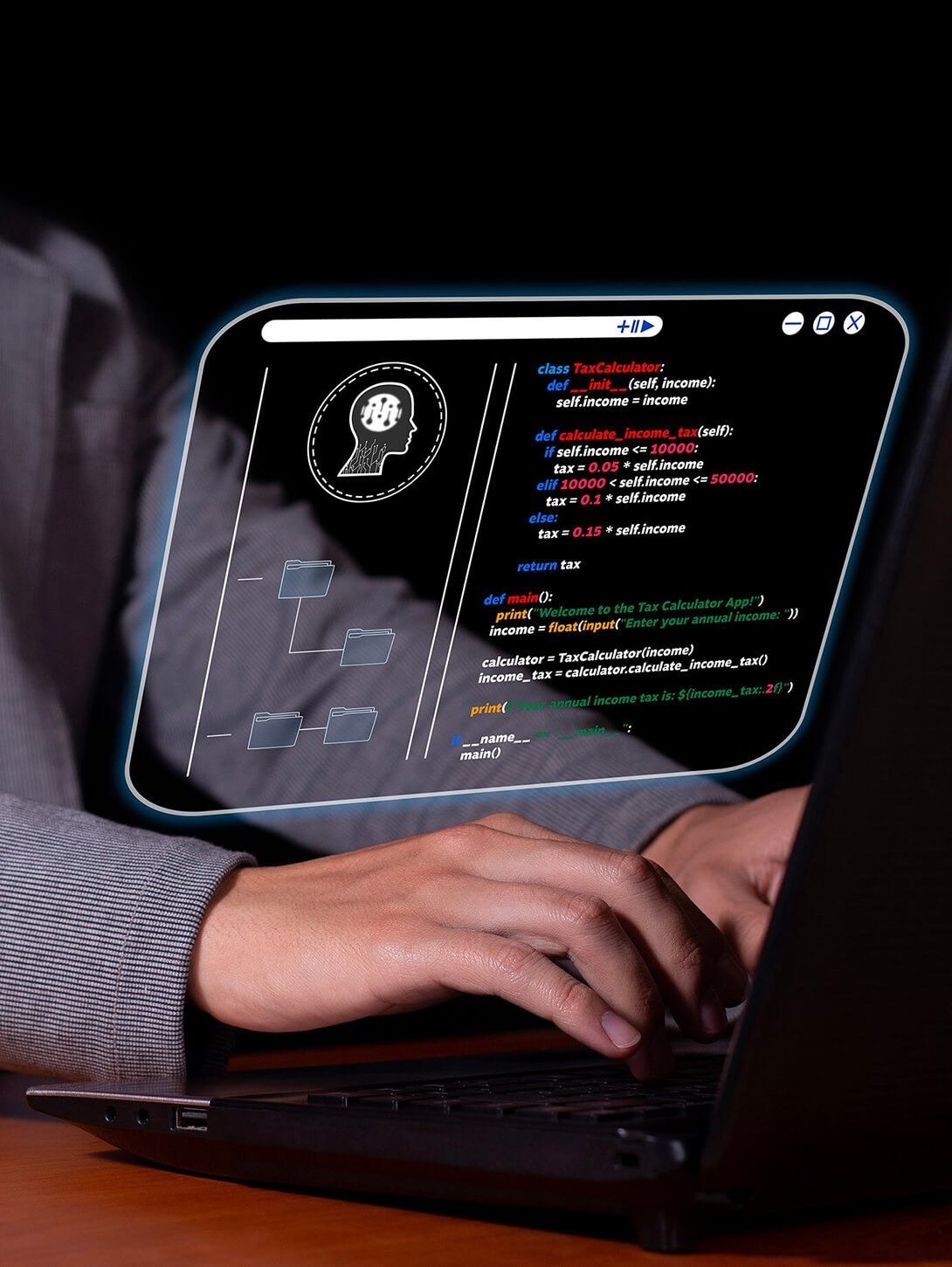Firmware Security for Enterprises
Enhancing Security with Firmware Best Practices
In an era of sophisticated cyber threats, firms increasingly recognize the critical importance of firmware security. Beyond the traditional focus on software and network defenses, enterprises now turn to robust firmware strategies as a foundational pillar of cybersecurity. upStream AI presents a compendium of best practices designed to fortify your enterprise’s firmware security, from preemptive risk assessments to post-breach protocols, ensuring a fortified stance against evolving digital perils. Join us as we delve into the intricacies of enhancing your cybersecurity posture at the firmware level.

Firmware Security
Protecting Network Devices in Enterprise Environments
In today’s dynamic digital landscape, firmware security is a critical facet of an organization’s cyber defense framework. Firmware—the integral microcode written into devices’ hardware—is the backbone of countless enterprise systems. Nevertheless, securing these devices is paramount as they are intricately woven into the fabric of organizational networks. A lapse in firmware security can open doors to vulnerabilities, compromising not just a single product but the entire ecosystem it resides within. Secure firmware practices are the cornerstone to safeguarding these devices, ensuring device security is maintained from development through deployment and beyond.
upStream AI's Cutting-Edge Solutions for Robust Risk Management in Cybersecurity
Risk management strategies in firmware security focus on protecting the intricate supply chain interactions as each component, each written line of code, is a potential entry point for cyber threats. To foster a resilient network, enterprises must enforce rigorous standards across the production cycle, addressing vulnerabilities at their source. As attacks become increasingly sophisticated, continuously monitoring and updating firmware is essential to shield organizations against emerging threats. This is where upStream AI’s expertise becomes invaluable; offering state-of-the-art solutions, upStream AI is at the forefront of innovation, creating robust defenses tailored to an enterprise’s unique risk profile.
Proactive Strategies for Enhanced Firmware Security
By embedding best practices into the hardware life cycle, companies secure the trust of their customers and stakeholders. Developing secure ecosystems becomes a shared responsibility across the product life cycle. Investment in developing and integrating protective measures in the initial stages can prevent potential breaches in safeguarding data and infrastructure. Furthermore, aligning with standards that have been rigorously vetted by the cybersecurity community represents a proactive approach to firmware security, offering an additional layer of defense that complements traditional software security measures. These practices do not just benefit the device in question; they ripple across the entire network, enhancing the security posture and resilience of the enterprise as a whole.
Safeguarding Enterprise Ecosystems through Firmware Security Excellence
Securing the ecosystems in which these devices operate isn’t just a technical issue—it’s a business imperative. Enterprises that recognize the importance of firmware security and adopt robust policies and practices place themselves at a distinct advantage. They protect their assets and signal their commitment to comprehensive security and resilience to the market. As cybersecurity experts, we encourage companies to embrace these imperatives, staying ever-vigilant in the fight against risk and ensuring their firmware—and, by extension, their enterprise—remains secured against the ever-evolving cyber threats.

Unraveling the Threads
Understanding and Mitigating Software Vulnerabilities
Code Vulnerabilities
Design Oversights
Malicious Machinations
Third-Party Perils
Access Control Chronicles
Input Validation Vigilance
Logging Lapses
Error Handling Essentials
Session Security
Patch Priorities
Data Defense
Code Consciousness
Time-to-Market Balancing Act
API Insecurities
Supply Chain Scares
Asset Configuration Management
Best Practices
for
Asset Configuration Management
Asset Inventory Tracking
Firmware & Software Version Control
Asset Configuration Policy
Change Management Integration
Secure Configuration Repositories
Access Control for Configurations
Automated Configuration Tracking
Documentation Audits
Staff Training on Documentation
Detailed Configuration Records
Implementing Secure Firmware Development Practices
Firmware Security: A Strategic Imperative
When it comes to firmware security, enterprises must emphasize secure firmware development as a cornerstone of their overarching security strategies. Delving into the intricacies of firmware development entails a meticulous approach to integrating software and hardware components in product development, ensuring they coalesce to form a robust defense against potential threats. By establishing rigorous security standards early in the process, organizations can embed a culture of security that permeates through every stage of the life cycle.
Recognizing the complex network of supply chain dependencies is vital, as it is here that vulnerabilities often take root. By scrutinizing every link within the supply chain, firms can nip potential issues in the bud, curtailing the risk of inadvertently introducing malware into their secure firmware through rogue elements. It’s not just about securing what is written but also about verifying the origin and integrity of each component utilized in your operations.


Fortifying Firmware: Navigating the Interplay of Software and Hardware Vulnerabilities
The nexus between software and hardware needs careful consideration during firmware development. This is due to the intertwined nature of their vulnerabilities; a flaw in one could easily compromise the other. Constructing a secure base requires a layered approach, addressing risks on all fronts and ensuring that every piece of code written contributes positively to the stability and security of the final product.
Embarking on the journey toward enhanced firmware security requires diligence and an unwavering commitment to continuous improvement. Best practices suggest a proactive stance on updating and patching firmware to protect against the latest threats. Aligning with established security standards is pivotal; it doesn’t just validate the security measures in place but also signals to stakeholders the high priority placed on mitigating risks associated with vulnerabilities. Following such standards can substantially decrease the likelihood of security breaches, promoting confidence in the reliability of your product development cycle.
Staying Ahead
The Continuous Battle for Firmware Security
Ultimately, securing firmware is an ever-evolving challenge, a chess match against would-be exploiters aiming to undermine your enterprise’s integrity. By committing to secure firmware development practices, businesses safeguard themselves, their products, and, most importantly, their customers. The goal is not just to respond to threats but to anticipate them—developing an infrastructure that is resilient in the face of the unknown. As an expert in cybersecurity, upStream AI champions this proactive philosophy, empowering enterprises to stay one step ahead in the constant battle for digital security.
Proactive Firmware Security for Essential Sectors
Fortifying Critical Infrastructure
Electrical Grids and Power Supply Networks
Telecommunications and Information Technology Systems
Water Supply and Wastewater Management Systems
Transportation Systems, including Airports, Railways, and Ports
Healthcare Facilities and Public Health Systems
Financial Services and Banking Institutions
Ensuring the Security of Devices with Regular Firmware Updates and Verification
The Vital Role of Firmware Security
The backbone of your enterprise’s device security hinges on robust firmware security protocols. It’s imperative that firmware updates are carried out regularly to protect against the relentless onslaught of cyber threats that target vulnerabilities within company hardware. These updates provide an essential shield, fortifying devices against malware infections and securing the vast array of network devices that comprise the technological ecosystem of an enterprise. Effective firmware verification is just as crucial; it ensures that updates are authentic and have not been compromised within the supply chain, mitigating potential risks that could undermine the security of your devices.
Prioritizing Firmware Updates for Enterprise Security
Staying ahead of threats necessitates a comprehensive risk management strategy that regards firmware updates not as an afterthought but as a cornerstone of enterprise security. By implementing a schedule for firmware updates and adhering to it, organizations can significantly lessen the likelihood of attacks taking advantage of outdated systems. Among other tech giants, Microsoft reinforces the importance of maintaining current firmware standards as a key aspect of securing modern infrastructure.
The Dual Strategy of Firmware Updates and Verification
However, mere updates are not enough; verification is paramount. Each update must be thoroughly vetted to ensure it hasn’t been tampered with. This dual approach – updating and verifying – closes the door to malicious actors seeking to exploit even the smallest window of opportunity. Implementing secure firmware development practices, as discussed in preceding sections on ‘Firmware Security: Protecting Network Devices in Enterprise Environments’ and ‘Implementing Secure Firmware Development Practices’, significantly reduces the attack surface, providing enterprises with more robust solutions to defend against potential security breaches.
Safeguarding Firmware in a Dynamic Threat Landscape
As devices evolve, so do the threats against them. The landscape is dynamic, with attackers constantly devising new ways to compromise enterprise systems. That’s why it’s critical to secure and continuously fortify firmware security by embracing standards that keep pace with the evolving nature of cyber threats. Enterprises must champion an ethos of securing firmware by leveraging comprehensive solutions and employing best practices—because in the realm of cybersecurity, the cost of complacency is far too high.
Product Safety
Like cars, technology products should undergo rigorous safety testing to minimize the risk of physical harm to users
Privacy Protection
Reputable tech companies must ensure their products protect consumer privacy and securely handle personal data
Transparency
Providers should clearly communicate how technology functions and any potential risks associated with its use.
Reliability
Consistent performance without frequent breakdowns or failures is a reasonable expectation for technology, just like for automobiles.
Security
Tech products need robust security measures to defend against cyber threats and unauthorized access.
Support and Warranty
Companies must offer proper support and warranty services, ensuring customers receive assistance when issues arise
Regulatory Compliance
Technology products should comply with all relevant laws and regulations, just as vehicles must meet safety and emissions standards.
Ethical Design
Tech products should be designed ethically, avoiding manipulation or exploitation of users
User Control
Users should have substantial control over their technology, including customization, preferences, and consent for data collection
Environmental Responsibility
Just as cars are evaluated for their environmental impact, tech products should also be designed with sustainability in mind
Advancing Device Security through Hardware and Software Firmware Verification Scans
In the rapidly evolving cybersecurity landscape, advancing device security is a critical frontier. One foundational step is embracing firmware security within both hardware and software domains. This is not just news; it’s a necessary paradigm shift in managing and securing our technological ecosystems. Think of firmware as the bedrock on which your devices operate—ensuring that this layer is impenetrable to threats is essential. That’s where firmware verification scans come into play. These scans are systematic checks to identify vulnerabilities that could be exploited by malware or other malicious attacks.
When it comes to firmware security, the adage, “better safe than sorry,” couldn’t be more relevant. Employing firmware scans across devices ensures an additional layer of security, protecting the integrity of your device security. A firmware scan can scrutinize both recent updates and the existing firmware against known risks, thus maintaining a secure posture within your enterprise’s technology ecosystem. Regular verification scans are a tool used to audit the security health of your devices and should be part of your routine security protocols, mitigating the risk of an attack through outdated or compromised firmware.
upStream AI understands the importance of a comprehensive security solution that addresses all aspects of firmware security. In a world where hardware and software are equally vulnerable, a robust verification process for both is not a luxury but a necessity. This process ensures that anomalies are detected early and can be swiftly addressed before they escalate into a system-wide issue. By prioritizing firmware verification, you contribute to a more secure product ecosystem. It is not just about finding problems but about continuously monitoring attacks’ unpredictable nature and malware’s evolution.
Regular firmware updates are essential, but they must be matched with diligent firmware verification to close any potential backdoors into your systems. It’s critical that devices aren’t just regularly updated and consistently checked to be secure against the latest threats. This approach is central to maintaining device security and ensuring that the enterprise’s hardware and software remain resilient despite persistent threats. With the right solutions in place, your enterprise can transform firmware security from a potential weak spot into a bastion of your security strategy, setting a standard that keeps your data secure and your mind at ease.
Fortifying Product Security and User Privacy
Comprehensive Strategies for Modern Protection
Integrate robust security features into products by default, ensuring that basic security measures don’t require additional setup from the user.
Offer clear, accessible, and comprehensive user education materials focused on security best practices relevant to the product.
Implement regular software updates and patches to address known vulnerabilities in a timely manner.
Provide timely and transparent communication about potential security issues and guidance on mitigating risks.
Incorporate end-user feedback into developing security features to ensure they meet real-world needs.
Develop a straightforward and quick response process for users identifying security vulnerabilities or breaches.
Use encryption by default for data transmission and storage to protect user data from unauthorized access.
Design products with privacy in mind, allowing users to control what information they share and with whom.
Offer multi-factor authentication options to enhance account security for users.
Regularly conduct security audits of their products and services to identify and rectify potential weak points.
Build a dedicated security team responsible for monitoring threats and improving security measures over time.
Establish a bug bounty program to encourage third parties to disclose vulnerabilities responsibly.
Ensure compliance with relevant data protection and privacy regulations, such as GDPR or CCPA, depending on the market.
Partner with third-party security experts for independent assessments and certifications, demonstrating commitment to security.
Implement AI-based threat detection systems to identify and block suspicious activities in real time.
Design products with the ability to integrate seamlessly with other existing security tools and solutions already utilized by customers.
Develop a contingency plan including clear guidelines on how users can secure their data in case of a security breach.
Maintain a transparent and user-friendly privacy policy that explains how customer data is used and protected.
Design user interfaces that encourage secure practices, such as avoidance of obvious password choices during account setup.
Limit the collection of personal data to what is necessary for product functionality and clearly state the purpose for which it is used.
Securing the Chain
Strategies for Supply Chain Risk Management and Resilience
- Evaluate your current IT supply chain for known risks and vulnerabilities.
- Conduct regular, thorough audits of your IT infrastructure.
- Implement a risk management framework tailored to supply chain threats.
- Develop and enforce strict security policies and procedures for your suppliers.
- Ensure continuous monitoring for abnormal activities or security breaches within your supply chain.
- Establish a vendor security assessment program for ongoing vendor evaluations.
- Invest in training programs for your staff to recognize and respond effectively to supply chain threats.
- Advance your incident response plan to include supply chain-related incidents.
- Collaborate with industry partners to share information on threats and best practices.
- Maintain a list of alternative suppliers to reduce dependency on a single entity.
- Apply end-to-end encryption for sensitive data shared across the supply chain.
- Assess the cybersecurity posture of all third-party vendors periodically.
- Engage in proactive cyber threat hunting within your supply chain network.
- Incorporate security considerations into the procurement process of IT resources.
- Update and upgrade security systems in step with emerging threats and vulnerabilities.
- Include formalized offboarding processes for terminating supplier relationships securely.
- Utilize advanced tools like AI and machine learning for predictive analysis of supply chain risks.
- Foster a culture of security awareness throughout the organization, including the supply chain.
- Investigate and map out the entire supply chain to understand the flow of products and information.
- Exercise strong contract management with clauses that mandate compliance with security standards.
- Adopt a zero-trust security model whereby all users, even insiders, must authenticate and be authorized.
- Regularly update contingency and business continuity plans to account for supply chain disruptions.
- Isolate sensitive systems from potential supply chain infiltrations with network segmentation.
- Implement stricter access controls and monitoring of privileged accounts that access the supply chain.
- Employ multi-factor authentication for systems tied to supply chain operations.
- Conduct penetration testing and vulnerability assessments targeting supply chain integrations.
Building a Resilient Foundation: Secure Firmware for Enterprise Devices
In the realm of cybersecurity, secure firmware represents the bedrock upon which the security of all enterprise devices is constructed. Proper firmware security is not just a luxury—it’s necessary for organizations striving to safeguard their digital environments from intrusive cyber attacks. A device’s firmware, often overlooked in the layers of defense, is at the core of enterprise security strategy. The firmware management is a meticulous process, requiring diligence to minimize the risk of supply chain infiltrations and other vulnerabilities. By embedding security into firmware, enterprises can fortify their devices against unauthorized access and corruption. A secure firmware foundation substantially diminishes the susceptibility to attacks that could compromise valuable data or disrupt operations. UpStream AI believes that adopting a culture of secure firmware development is paramount.
This begins with understanding how firmware is intrinsic to hardware and software security ecosystems. Verification processes are critical to maintaining the integrity of firmware, not only post-development but throughout the lifecycle of the device. Regular firmware updates and verification ensure that devices remain impenetrable against emerging threats, reflecting a proactive approach to security maintenance. Moreover, rejecting optional cookies and other non-essential data acquisitions limits risk exposure, enhancing the network devices’ overall security posture within enterprise environments. Furthermore, it’s essential that organizations have robust mechanisms to manage their firmware supply chain. A compromised supply chain can lead to tainted products entering the corporate environment, thus elevating the level of threat to device security. Supply chain scrutiny and the employment of verification scans should be a non-negotiable aspect of the procurement process, essentially rejecting optional elements that do not meet stringent security criteria. Integrating these practices into an enterprise’s security philosophy is not merely about following a trend; it’s about acknowledging that in the cyber landscape, the only constant is change.
UpstreamAI
As a thought leader in this field, UpStream AI promotes a boundary-pushing mentality, where standardization of secure firmware practices intersects with innovative risk mitigation strategies. By doing so, we empower organizations to operate confidently and assure that their every device speaks resilience in the language of security. So, when it comes to building that resilient foundation for your enterprise’s devices, it’s not just about being secure; it’s about being impenetrable.
Your Privacy, Our Top Priority
Committed to Your Security Worldwide
At upStream AI, your privacy is our top priority. Whether you’re at work, at home, or traveling anywhere worldwide, rest assured that we are working tirelessly, 24/7, to keep those digital doors and windows securely locked.